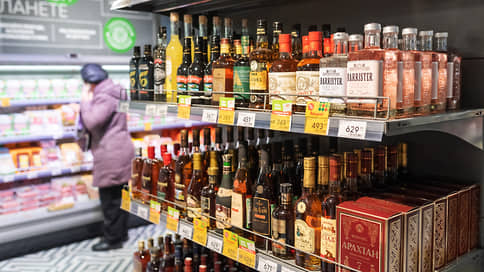Russians have their own Gordon’s – Newspaper Kommersant No. 222 (7423) dated 11/30/2022
[ad_1]

The reduction in strong alcohol imports to Russia contributed to the development of Russian brands, primarily in the categories of gin and liqueurs. According to NielsenIQ, local novelties have become the most successful in these segments, accounting for about 10% of all sales since the beginning of the year. Companies continue to launch new brands, anticipating an increase in demand. But experts point to the high attachment of consumers to well-known brands.
Russian producers are sharply increasing their share in sales of gin, liqueurs and bitters, according to a NielsenIQ study. According to the results of the three quarters of 2022, 4.2% of gin sales in physical terms were accounted for by local brands that appeared this year, in the categories of liqueurs and bitters, local novelties accounted for 2.7% and 2.2% of demand, respectively. Imported brands of liqueurs and bitters accounted for only 0.1% of novelty sales during this period, while gin accounted for 4.6%.
According to NielsenIQ, since the beginning of this year, 20 new Russian gin brands, 13 new liquor brands and seven bitters brands have appeared.
In the gin category, sales of 11 launched brands exceeded RUB 1 million, and one brand exceeded RUB 100 million. Among liqueurs and bitters, the turnover is more than 1 million rubles. showed six and three new brands, respectively. In the category of whiskey, Russian brands are still inferior to foreign ones. According to NielsenIQ, 36 new local brands have appeared here since the beginning of the year, but they accounted for only 0.1% of the category’s sales.
Pavel Funtikov, head of NielsenIQ’s alcohol and tobacco customer service group, notes that local producers are actively striving to fill the niche of departed foreign companies. The spike in demand for new liquor brands came in September, according to NielsenIQ, which could be related to Jagermeister supply issues. And in the portfolio of Diageo, which announced the reduction of work in the Russian Federation, was Gordon’s gin. According to Mr. Funtikov, the most growing brands of gin and bitters are Russian brands, which are about 30-40% cheaper than the average drink in the category.
Alexander Stavtsev, head of the WineRetail information center, says that the production of gin does not require complex technology, and raw materials are inexpensive. As a result, very similar-tasting drinks are appearing on the market, many of which are chain-owned brands, he adds. But, the expert continues, the growth of gin sales in physical terms is still explained by the low base effect.
Development Director of Ladoga (Barrister gin) Dmitry Isachenkov points out that in 2017, IWSR analysts estimated the volume of the Russian gin market at 1.6 million liters, and in 2021 – at 7.7 million liters, of which 3.5 million liters were occupied by barrister. According to him, this year Ladoga has released three new branded products and will continue to develop the brand. As Mr. Isachenkov notes, any niche is filled with time, and the share of foreign brands that have left is still distributed between already well-known brands and new products.
Elena Stolbovskikh, Chairman of the Board of the Alcoholic Siberian Group (ASG), says that the company has launched Broom gin in the segment from 1,000 rubles. per bottle as a substitute for an imported drink and intends to continue developing new products. In the category of liqueurs, ASG plans to launch a line in the premium segment in cooperation with one of the restaurant holdings, she added. Rust Group also plans to launch Bristoll’s gin in December 2022 due to the popularity of the drink and the departure of global players, the group says.
According to Mr. Stavtsev, in the segment of strong alcohol, dependence on well-known brands is quite high, and in a number of regions, retail chains have noted a decrease in whiskey sales after washing out popular brands from the shelves. And that could also be one of the reasons shoppers switch to other categories of spirits, primarily vodka and bitters, he adds. Luding Group Marketing Director (Lockwood Gin, Deep Forest) Andrey Ushakov adds that competition in the segment of Russian liqueurs, bitters and especially gins is already very high, but the demand for local drinks will continue to grow, as the departed foreign brands of spirits accounted for up to 40% categories. According to him, at the first stage, companies will compete on price and appearance.
[ad_2]
Source link





